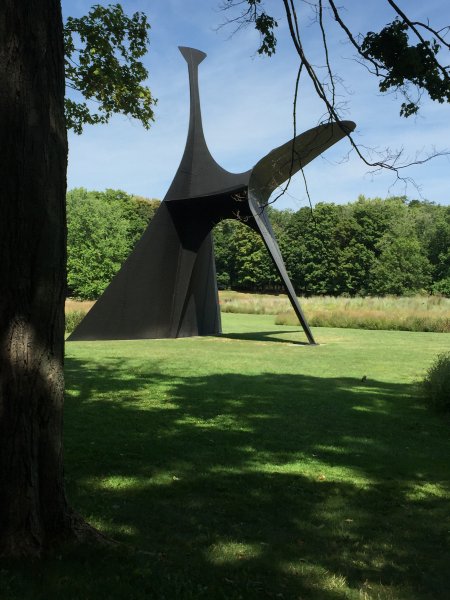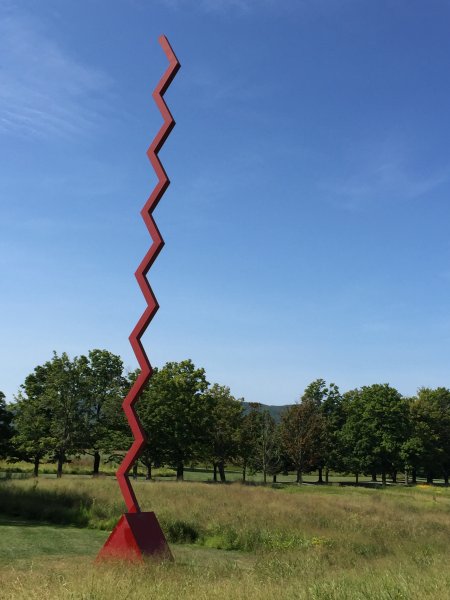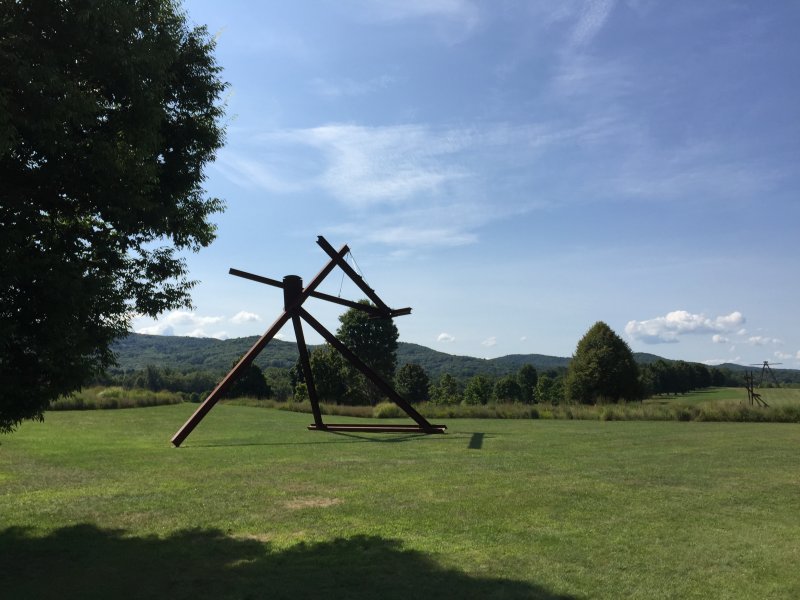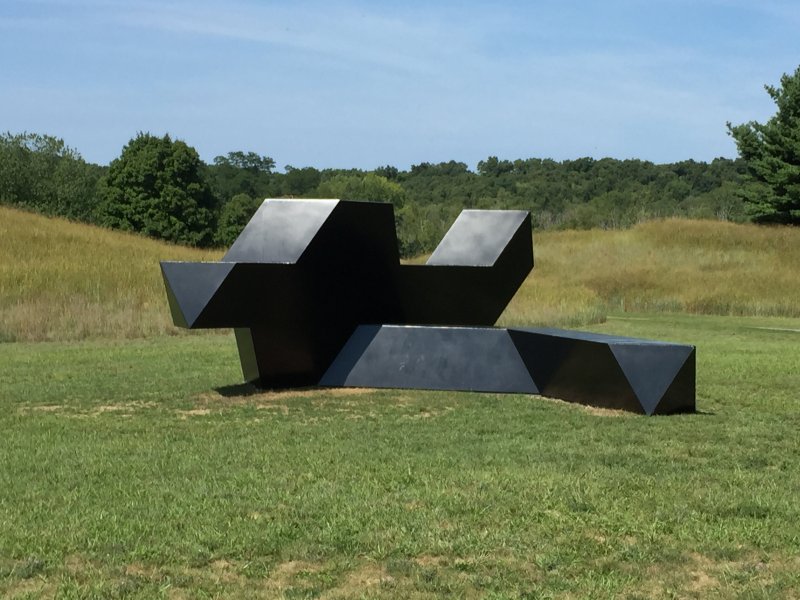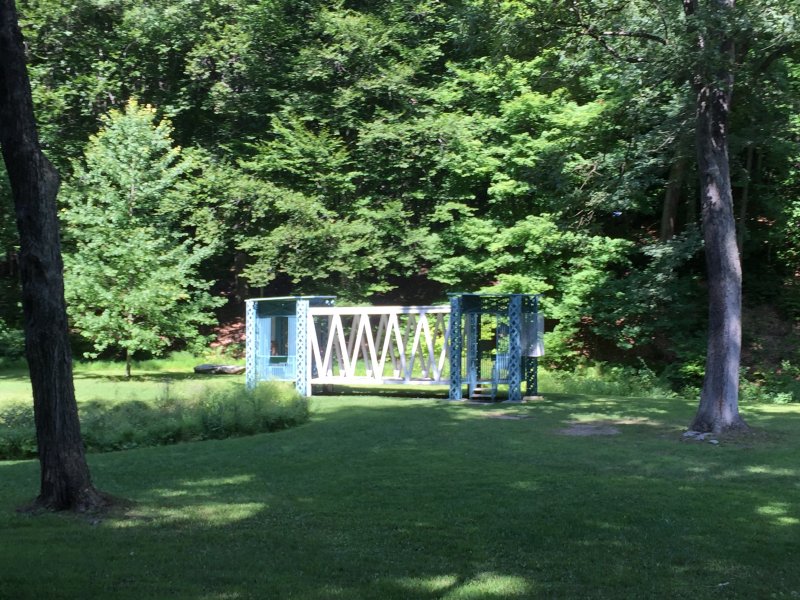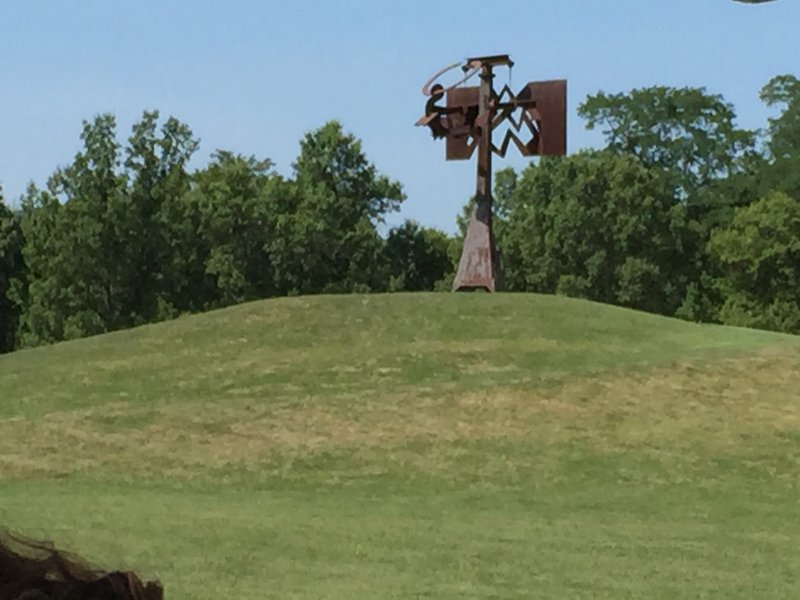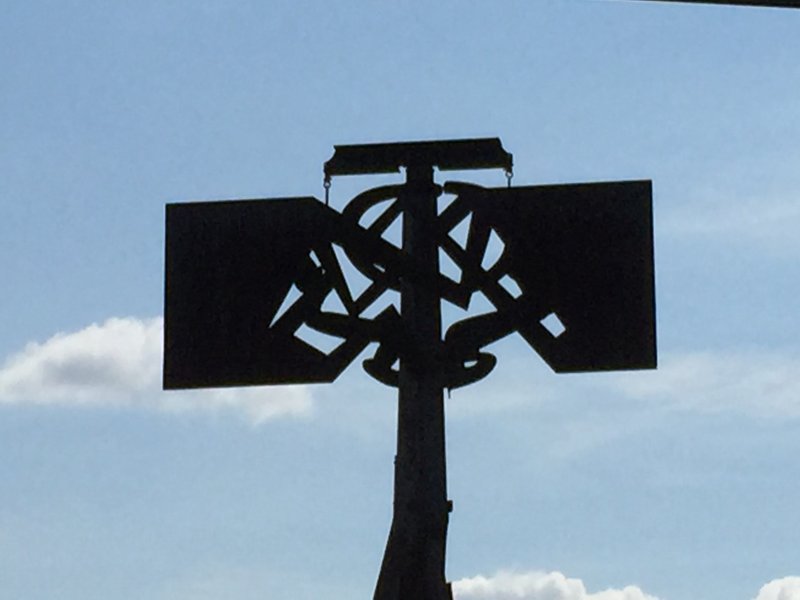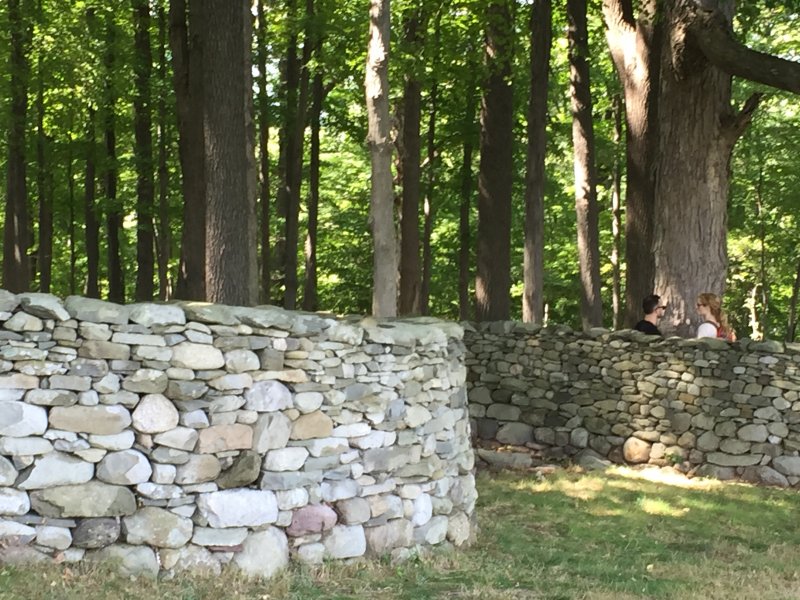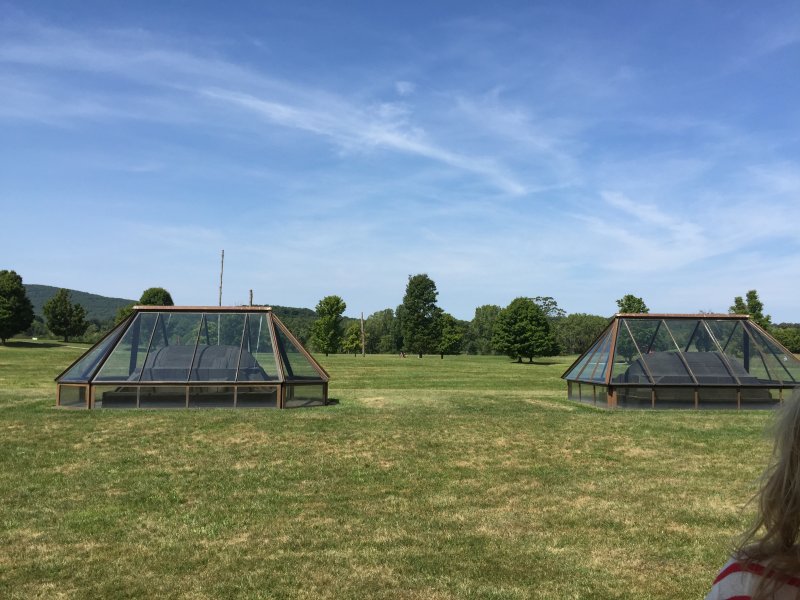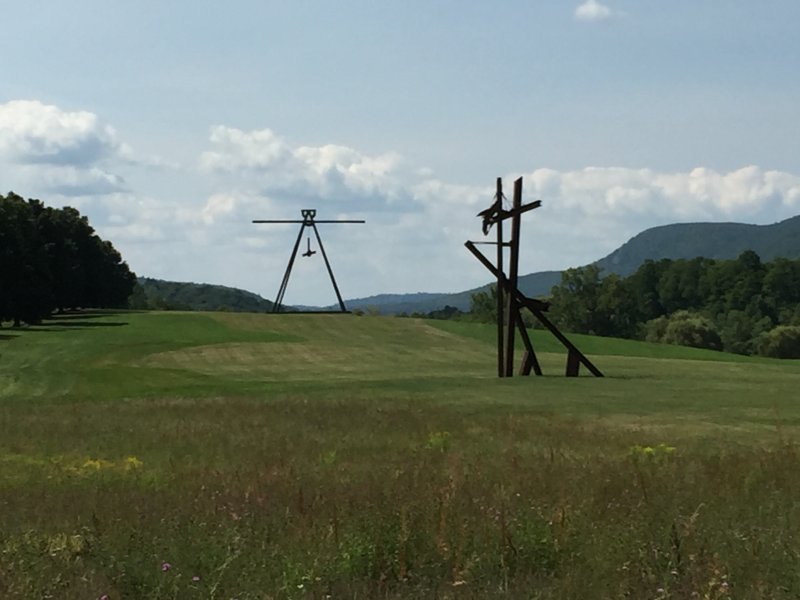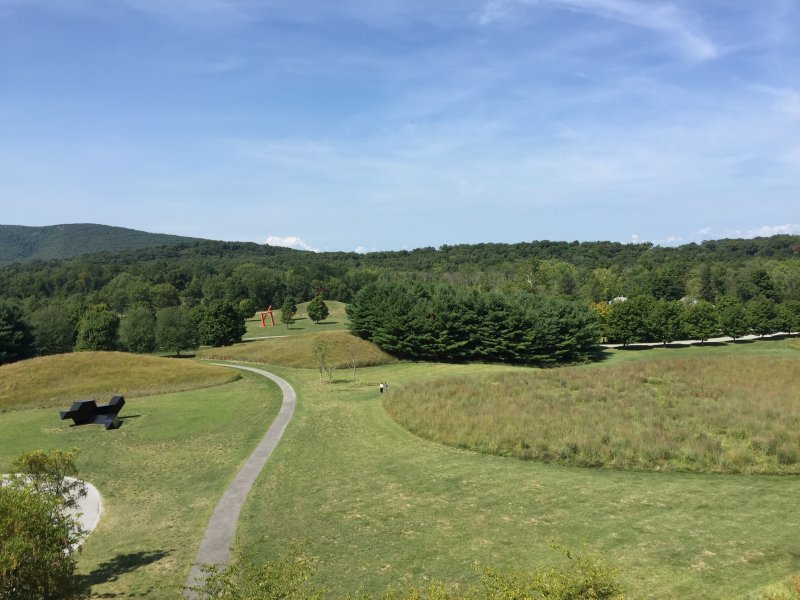As ever, the Aldrich Museum, a non-collecting contemporary art museum, makes a worthy stop to see what its clever curators have dreamed up. This summer, the show features four artists who have made site-specific works. That is, works that in some way reference the museum or the town of Ridgefield, CT.
The works of two artists made me really happy: Virginia Overton and Peter Liversidge.
Overton worked with a dead pine tree from the museum property to make monumental indoor and outdoor sculptures. I love the outdoor swing, which has attracted more than human behinds. Apparently, a local cat really likes to sit on the swing, as do birds.
The piece (actually three separate works, but I see them as one), though, that I lingered with, reveled in, and meditated on was Untitled (Log Stand) from 2016. Not naming a piece leaves the experience to the viewer, but in this case, the artist also didn’t share any intentions with the work.
Still, I had lots of experiences of it. As a dead tree trunk, something we all know, the thing has weight, heft. Yet Overton has lifted these trunks way up in the air. It doesn’t take long for the support stands to lose their seeming weight, too, and for the whole piece to seem to float.
One of the museum interpreters told me the only thing the artist really intended was to have each piece point to the outdoors. Which they do. I started to see more, like sea creatures.
I watched the logs’ spirit rise to heaven. I started to feel my spirits elevate, the way architects intended when people look up in or at a church or cathedral.
The kinesthetic sense of the lifting and lightening of this ‘dead’ thing animated it and me. Overton created a weightless sculpture, a defying of gravity that is so joyous and of the spirit.
Peter Liversidge lifted my spirit, too, with his seemingly insatiable wit. He made 60 site specific proposals to the museum, all framed, mounted, and on view in his gallery there. 24 were implemented in the museum and around town. Some were not, as they were philosophical…
…unactionable…
…and just silly.
A British conceptual artist (the concept is the art), Liversidge has a creative mind I relate to, so I’ll share my favorites of his works on view at the museum.
The first could be easy to miss. The above photo shows you why. The work is just a dot on a sea of white wall. Oh, but so much more.
Ridgefield is a town with deep history. Keeler Tavern, next door to the museum, stills sports a Revolutionary War cannon ball fired by the British lodged in its walls. Liversidge had Revolutionary War re-enactors shoot a cannon ball into a new wall, then installed it at the museum. A Brit leaving yet another gift for Ridgefield. Wonderful!
A British philosopher Bishop Berkeley espoused that nothing is real but what’s in the mind. An early postmodernist? Samuel Johnson countered that matter is real, proving it by kicking a rock. Liversidge proposes, “I intend that, whenever I come across a stone in Ridgefield that is a larger or similar size to my foot, I will stop what I am doing, and I will kick that stone to The Aldrch…” He and his interns kicked rocks into the museum, into the elevator, then across the bridge to his gallery. A man true to his word.
Then there is Proposal No. 20: Wooden objects posted to the Museum from the artist’s studio in London, UK, installed on a shelf. Yes, you understand that correctly. Liversidge mailed found wooden objects to the museum. He had to work with the postmaster in London and get agreement in Ridgefield.
The postwoman normally delivers mail to the administrative offices, located in a church up the hill above the museum. She started delivering the pieces directly to the museum, so that she, too, the interpreter told me, became a creator of the work.
Delightful!
I leave you with this Liversidge proposal, one I resonate with deeply.

















 Maybe the
Maybe the 
